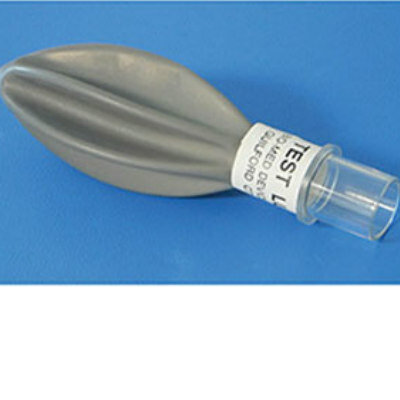Reducing Low-Value Health Services Encourages Savings
|
By HospiMedica International staff writers Posted on 19 Sep 2016 |
A new study concludes that reducing spending on a wide array of low-value health services among insured adults holds considerable potential for cost savings.
Researchers at RAND Corporation (Pittsburgh, PA, USA) and the University of Southern California (USC; Los Angeles, USA) examined spending on 28 low-value healthcare services and procedures among U.S. adults (18 to 64 years of age) by reviewing more than 1.46 million commercial claims lodged at United Healthcare (UHC; Minnetonka, MN, USA) between 2011 and 2013. In all, 7.8% of the patients who put in claims received low-value services in 2013, with the total amount spent being USD 32.8 million, which accounted for 0.5% of total spending, or USD 22 per person annually.
The most commonly received low-value services included hormone tests for thyroid problems and imaging for low-back pain and uncomplicated headache. The greatest proportion of spending was for spinal injection for lower-back pain at USD 12.1 million, imaging for uncomplicated headache at USD 3.6 million, and imaging for nonspecific low-back pain at USD 3.1 million. Demographically, low-value spending was lower among patients who were older, male, black or Asian, lower-income, or enrolled on consumer-directed health plans, which have high member cost-sharing. The study was published as a research letter on August 29, 2016, in JAMA Internal Medicine.
“The services in this study reflect many clinical areas and types of care, but still are a small portion of all the low-value care patients receive. Our findings add evidence to the notion that reducing overuse of medical procedures could improve quality while reducing spending,” said lead author Rachel Reid, MD, of RAND. “The potential savings from reducing these low-value services and others are substantial.”
“Areas with high Medicare spending also seem to have greater use of low-value services among those with commercial insurance. This confirms that there are opportunities for cost savings, and that both private insurers and Medicare can benefit from efforts to reduce use of low-value care,” added senior author Professor Neeraj Sood, PhD, of USC. “Disparities in health care cut two ways -- it can cause poor access to high-value care among vulnerable patients and overuse of low-value care among more-advantaged groups. Both need attention.”
According to a 2012 report by the U.S. Institute of Medicine (IOM, Washington, DC, USA), more than USD 750 billion of health care spending annually represents waste, including approximately USD 200 billion in overtreatment. In order to reduce that amount, the American Board of Internal Medicine Foundation and consumer groups launched an initiative called ‘Choosing Wisely’ in order to encourage physicians and patients to engage in conversations about evidence-based medical practices.
Related Links:
RAND Corporation
University of Southern California
United Healthcare
U.S. Institute of Medicine
Researchers at RAND Corporation (Pittsburgh, PA, USA) and the University of Southern California (USC; Los Angeles, USA) examined spending on 28 low-value healthcare services and procedures among U.S. adults (18 to 64 years of age) by reviewing more than 1.46 million commercial claims lodged at United Healthcare (UHC; Minnetonka, MN, USA) between 2011 and 2013. In all, 7.8% of the patients who put in claims received low-value services in 2013, with the total amount spent being USD 32.8 million, which accounted for 0.5% of total spending, or USD 22 per person annually.
The most commonly received low-value services included hormone tests for thyroid problems and imaging for low-back pain and uncomplicated headache. The greatest proportion of spending was for spinal injection for lower-back pain at USD 12.1 million, imaging for uncomplicated headache at USD 3.6 million, and imaging for nonspecific low-back pain at USD 3.1 million. Demographically, low-value spending was lower among patients who were older, male, black or Asian, lower-income, or enrolled on consumer-directed health plans, which have high member cost-sharing. The study was published as a research letter on August 29, 2016, in JAMA Internal Medicine.
“The services in this study reflect many clinical areas and types of care, but still are a small portion of all the low-value care patients receive. Our findings add evidence to the notion that reducing overuse of medical procedures could improve quality while reducing spending,” said lead author Rachel Reid, MD, of RAND. “The potential savings from reducing these low-value services and others are substantial.”
“Areas with high Medicare spending also seem to have greater use of low-value services among those with commercial insurance. This confirms that there are opportunities for cost savings, and that both private insurers and Medicare can benefit from efforts to reduce use of low-value care,” added senior author Professor Neeraj Sood, PhD, of USC. “Disparities in health care cut two ways -- it can cause poor access to high-value care among vulnerable patients and overuse of low-value care among more-advantaged groups. Both need attention.”
According to a 2012 report by the U.S. Institute of Medicine (IOM, Washington, DC, USA), more than USD 750 billion of health care spending annually represents waste, including approximately USD 200 billion in overtreatment. In order to reduce that amount, the American Board of Internal Medicine Foundation and consumer groups launched an initiative called ‘Choosing Wisely’ in order to encourage physicians and patients to engage in conversations about evidence-based medical practices.
Related Links:
RAND Corporation
University of Southern California
United Healthcare
U.S. Institute of Medicine
Latest Hospital News News
- Nurse Tracking System Improves Hospital Workflow
- New Children’s Hospital Transforms California Healthcare
- Noisy Hospitals Face Threat of Decreased Federal Compensation
- Orthopedics Centre of Excellence Planned for Guy’s Hospital
- Research Suggests Avoidance of Low-Value Surgical Procedures
- U.S. Federal Readmission Fines Linked to Higher Mortality
- Columbia China to Build New Hospital in Jiaxing
- Dubai Debuts Second Robotic Pharmacy Service
- Seattle Hospital Network Shifts Away from Overlapping Surgeries
- ACC to Launch Valvular Heart Disease Program in China
- Mortality Rates Lower at Major Teaching Hospitals
- South Australia to Inaugurate Upscale Hospital
- Raffles to Launch Second Hospital Project in China
- Research Center Tackles Antimicrobial Drugs Challenge
- Miami Cardiac & Vascular Institute Completes Expansion Project
- Hospital Antibiotic Policies Improve Prescription Practices
Channels
Critical Care
view channel
Ingestible Capsule Monitors Intestinal Inflammation
Acute mesenteric ischemia—a life-threatening condition caused by blocked blood flow to the intestines—remains difficult to diagnose early because its symptoms often mimic common digestive problems.... Read more
Wireless Implantable Sensor Enables Continuous Endoleak Monitoring
Endovascular aneurysm repair (EVAR) is a life-saving, minimally invasive treatment for abdominal aortic aneurysms—balloon-like bulges in the aorta that can rupture with fatal consequences.... Read more
Wearable Patch for Early Skin Cancer Detection to Reduce Unnecessary Biopsies
Skin cancer remains one of the most dangerous and common cancers worldwide, with early detection crucial for improving survival rates. Traditional diagnostic methods—visual inspections, imaging, and biopsies—can... Read moreSurgical Techniques
view channel
Robotic Assistant Delivers Ultra-Precision Injections with Rapid Setup Times
Age-related macular degeneration (AMD) is a leading cause of blindness worldwide, affecting nearly 200 million people, a figure expected to rise to 280 million by 2040. Current treatment involves doctors... Read more
Minimally Invasive Endoscopic Surgery Improves Severe Stroke Outcomes
Intracerebral hemorrhage, a type of stroke caused by bleeding deep within the brain, remains one of the most challenging neurological emergencies to treat. Accounting for about 15% of all strokes, it carries... Read morePatient Care
view channel
Revolutionary Automatic IV-Line Flushing Device to Enhance Infusion Care
More than 80% of in-hospital patients receive intravenous (IV) therapy. Every dose of IV medicine delivered in a small volume (<250 mL) infusion bag should be followed by subsequent flushing to ensure... Read more
VR Training Tool Combats Contamination of Portable Medical Equipment
Healthcare-associated infections (HAIs) impact one in every 31 patients, cause nearly 100,000 deaths each year, and cost USD 28.4 billion in direct medical expenses. Notably, up to 75% of these infections... Read more
Portable Biosensor Platform to Reduce Hospital-Acquired Infections
Approximately 4 million patients in the European Union acquire healthcare-associated infections (HAIs) or nosocomial infections each year, with around 37,000 deaths directly resulting from these infections,... Read moreFirst-Of-Its-Kind Portable Germicidal Light Technology Disinfects High-Touch Clinical Surfaces in Seconds
Reducing healthcare-acquired infections (HAIs) remains a pressing issue within global healthcare systems. In the United States alone, 1.7 million patients contract HAIs annually, leading to approximately... Read moreHealth IT
view channel
Printable Molecule-Selective Nanoparticles Enable Mass Production of Wearable Biosensors
The future of medicine is likely to focus on the personalization of healthcare—understanding exactly what an individual requires and delivering the appropriate combination of nutrients, metabolites, and... Read moreBusiness
view channel
Philips and Masimo Partner to Advance Patient Monitoring Measurement Technologies
Royal Philips (Amsterdam, Netherlands) and Masimo (Irvine, California, USA) have renewed their multi-year strategic collaboration, combining Philips’ expertise in patient monitoring with Masimo’s noninvasive... Read more
B. Braun Acquires Digital Microsurgery Company True Digital Surgery
The high-end microsurgery market in neurosurgery, spine, and ENT is undergoing a significant transformation. Traditional analog microscopes are giving way to digital exoscopes, which provide improved visualization,... Read more
CMEF 2025 to Promote Holistic and High-Quality Development of Medical and Health Industry
The 92nd China International Medical Equipment Fair (CMEF 2025) Autumn Exhibition is scheduled to be held from September 26 to 29 at the China Import and Export Fair Complex (Canton Fair Complex) in Guangzhou.... Read more















